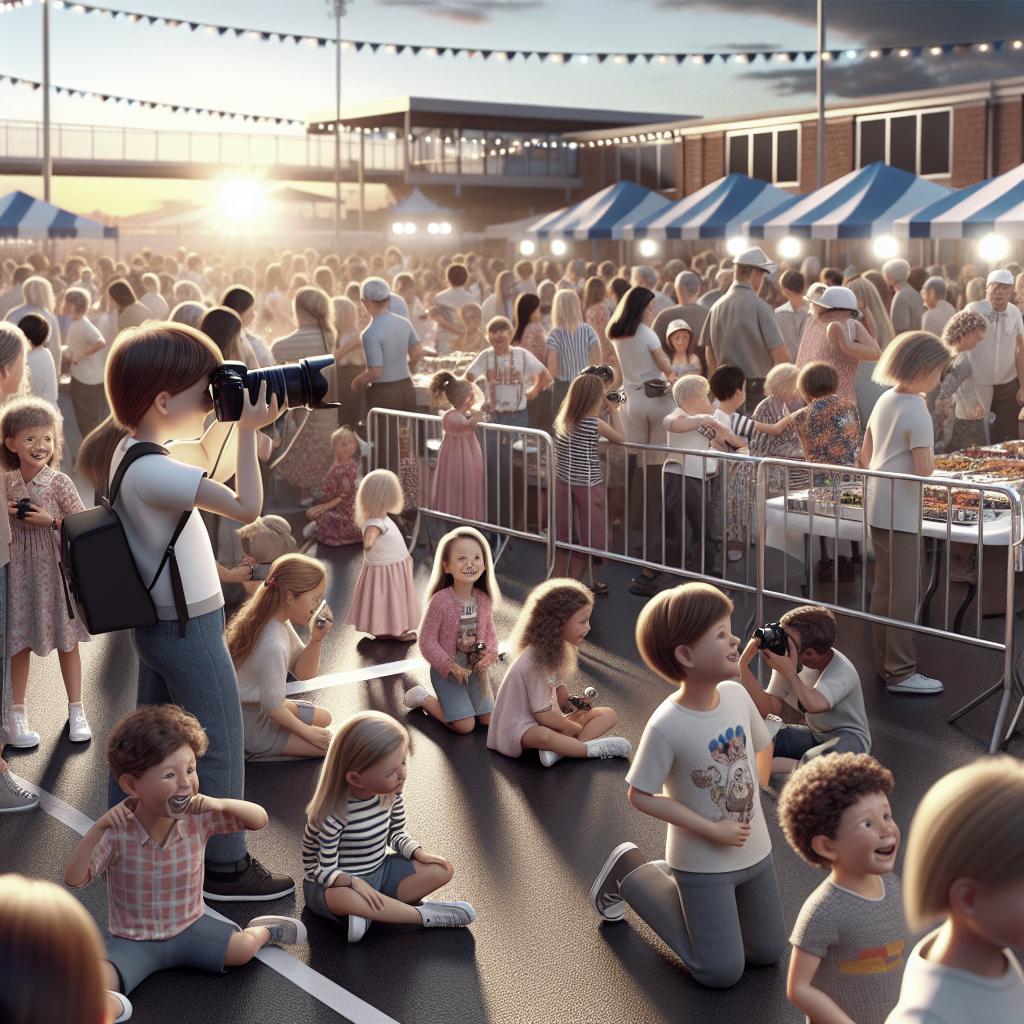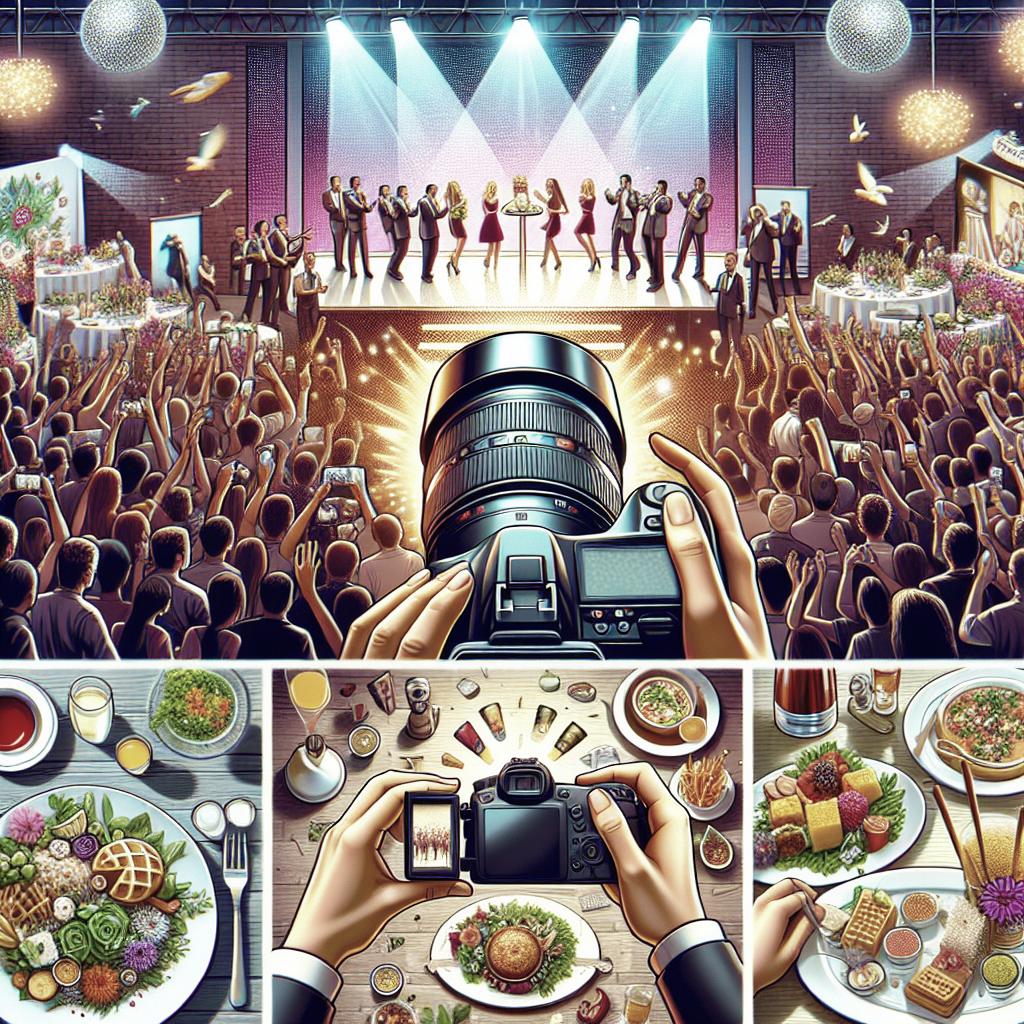<>
Portrait photography is an art that captures human emotions, beauty, and essence in frames. However, mastering the art of composition can significantly elevate your work from ordinary to extraordinary. This blog post delves into ten invaluable composition tips that can transform your portrait photography. From understanding the balance of ‘Small, Medium, and Large’ elements in your shots to the intriguing concept of ‘Frame within the Frame,’ you’ll gain insights into making your portraits more dynamic and engaging. Learn why ‘Less is More,’ how to interplay ‘Big and Small’ subjects creatively, and the importance of ‘Spacious vs Confined’ compositions. We’ll also explore how ‘Layers,’ ‘Texture,’ and ‘Something Shiny’ can add depth to your portraits. Finally, you’ll discover the delicate interplay between ‘Horizontal and Vertical’ orientations and the significance of ‘Primary and Secondary Subjects.’ Follow these practical tips and watch your portraits come to life!
Composition Tip #1: Small, Medium, and Large
Incorporating elements of varying sizes into your composition creates dynamic and visually appealing portraits. Imagine placing a small object, a medium subject, and a large background element in the same frame. This technique not only adds depth to your photos but also guides the viewer’s eyes through the image in a harmonious manner. A practical example is photographing a person (medium) against a vast landscape (large) while holding a small prop like a flower or book. This composition creates layers that make the photo more engaging and tells a richer story. By balancing these different sizes, you can make each element stand out while contributing to a cohesive visual narrative.
Composition Tip #2: Less is More
The principle of ‘Less is More’ is all about minimalism and focusing attention on the subject. By removing unnecessary elements, you avoid visual clutter and make your portrait more impactful. This technique encourages viewers to focus on what truly matters – the subject and their emotions. For instance, instead of capturing intricate backgrounds and multiple props, try a plain background and a single item that carries significance. This not only simplifies the composition but also enhances the emotional weight of the portrait. By paring down, your subject doesn’t have to compete for attention, allowing their essence to shine through.
Composition Tip #3: Big and Small
Balancing big and small elements within a composition can create a stunning contrast that draws attention to your subjects. The juxtaposition highlights differences and adds a sense of scale to your image, making it more intriguing. Take a photo of a towering building (big) with your subject (small) in the foreground. This contrast emphasizes the subject’s unique presence against the grandeur of the surroundings. By playing with scales, you can build a narrative that portrays your subject in context, be it a sense of adventure, insignificance, or wonder.
Composition Tip #4: Use Layers
Using layers in your composition can add depth and complexity to your portraits. This technique involves incorporating different planes of focus – foreground, middleground, and background – to create a multi-dimensional feel. Place elements in these different planes to frame your subject. For example, photograph a person (middleground) standing behind a window with plants (foreground) while capturing a cityscape (background) through the window. These layers create a sense of depth and dimension, making your portrait come alive.
Composition Tip #5: Spacious vs Confined
Contrast the feeling of space in your compositions by capturing portraits in both spacious and confined environments. This contrast can evoke different emotions and moods, enriching your visual storytelling. Photograph your subject in an expansive field or an open space to evoke freedom, isolation, or serenity. Conversely, capture them in a tight, confined space like a narrow alleyway to evoke feelings of tension, intimacy, or coziness. The spatial context of your portraits plays a significant role in what you want to convey.
Composition Tip #6: Add Texture
Adding texture to your portraits can bring them to life by engaging the viewer’s sense of touch visually. Textures in clothing, surroundings, or even skin can add layers of interest to your composition. Consider the roughness of brick walls, the fabric of clothes, or the tactile quality of hair. By incorporating these elements, you make the image palpable, and almost tangible. Texture can evoke specific emotions and add an additional layer of narrative to your portraits, making them not just seen but felt.
Composition Tip #7: Add Something Shiny
Incorporating shiny elements into your portrait compositions can instantly elevate the visual interest of your shots. Reflective surfaces like mirrors, metal jewelry, or water can add an eye-catching component that draws the viewer in. A strategically placed piece of shiny jewelry or a background element with reflective properties can catch and manipulate light beautifully. This can create dazzling effects, highlight key areas, and introduce an element of glamour or sophistication to your portraits. Just ensure the shiny object complements rather than overpowers your main subject.
Composition Tip #8: Horizontal and Vertical
Considering the orientation of your shots plays a crucial role in composition. The choice between horizontal (landscape) and vertical (portrait) orientations can change the viewer’s perception of the subject. Horizontal compositions often convey stability and expansiveness, making them ideal for group shots or environmental portraits. Vertical compositions, on the other hand, emphasize height and intimacy, great for headshots or full-body portraits. Depending on your subject and the story you want to tell, choosing the appropriate orientation can effectively enhance your portrait’s impact.
Composition Tip #9: Frame within the Frame
The ‘frame within the frame’ technique involves using elements within the scene to create a secondary frame around your subject. This technique focuses the attention on your subject and adds depth to your composition. For instance, photographing a person through a door frame or window creates a natural boundary that draws the viewer’s eye directly to the subject. This method allows you to create interesting layers and guide the viewer’s focus intuitively, adding a creative twist to your portraits.
Composition Tip #10: Primary and Secondary Subjects
Having both primary and secondary subjects in your portrait compositions can create a narrative and provide depth. The primary subject is the main focus, while secondary subjects add context and interest. Photograph a couple (primary subjects) with a scenic backdrop (secondary subject) or a child playing with a toy while a pet watches (secondary subjects). These secondary subjects support and enhance the main story, adding richer context to your portrait, making it more than just a static image but a storytelling piece.
Future Prospects
Incorporating these ten composition tips into your portrait photography can transform your work from simple snapshots to compelling visual stories that resonate with viewers. Each tip – from utilizing space and texture to layering and adding shiny elements – brings a unique way to frame your subjects creatively and engagingly. As you master these techniques, you’ll not only create stunning portraits but also develop a distinctive style that sets your work apart in a crowded field.
| Composition Tip | Summary |
|---|---|
| Small, Medium, and Large | Balance elements of varying sizes to create dynamic and engaging portraits. |
| Less is More | Focus on minimalism to remove clutter and highlight the subject’s emotions. |
| Big and Small | Contrast different scales to emphasize the subject and build a narrative. |
| Use Layers | Incorporate foreground, middleground, and background elements for depth. |
| Spacious vs Confined | Use different spatial contexts to evoke various emotions. |
| Add Texture | Incorporate tactile elements to make your portraits visually interesting. |
| Add Something Shiny | Use reflective elements to catch light and add visual interest. |
| Horizontal and Vertical | Choose the right orientation to influence perception and storytelling. |
| Frame within the Frame | Use natural elements to create secondary frames for added focus. |
| Primary and Secondary Subjects | Incorporate multiple subjects to create a narrative-rich composition. |
More Portrait and Lighting Tips and Tutorials on My YouTube Channel


